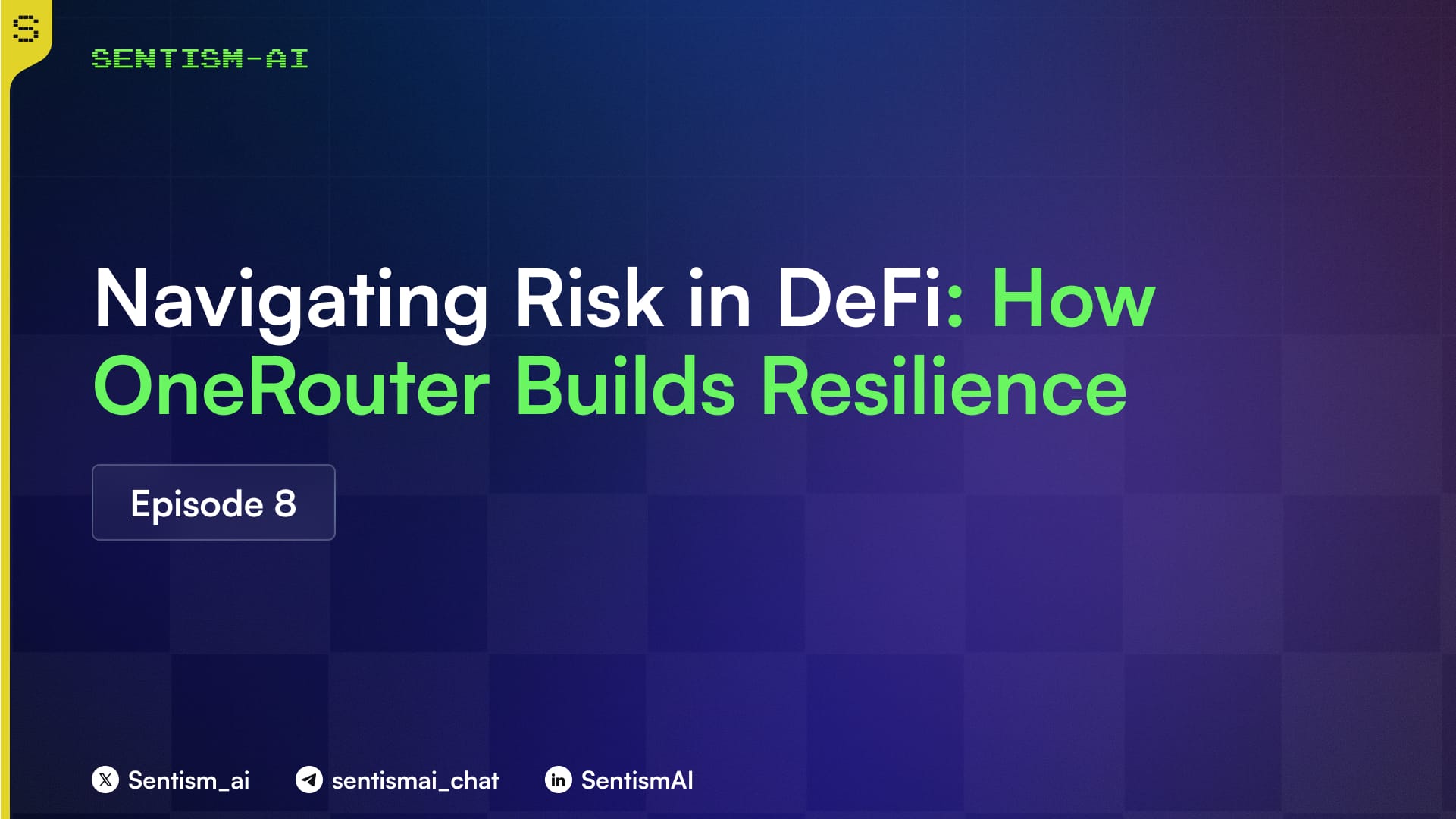Navigating Risk in DeFi: How OneRouter Builds Resilience

The Challenge of Risk in DeFi
Decentralized finance (DeFi) opens powerful opportunities for permissionless trading, lending, and yield generation. But with opportunity comes risk. Every transaction on-chain is exposed to market volatility, liquidity fragmentation, smart contract exploits, and systemic shocks.
Traditional finance has decades of experience in risk management, yet in DeFi, risks can materialize and spread within minutes. An asset can lose 70% of its value overnight, liquidity pools can drain in seconds, and a single smart contract flaw can cascade into millions of dollars in losses.
For protocols like OneRouter, which aggregate liquidity and route orders across multiple venues, risk is not an afterthought. It is a core design principle.
OneRouter’s Philosophy: Risk as a First-Class Citizen
At OneRouter, risk is not treated as a secondary consideration but as a first-order problem. We build risk-aware systems at every layer, from how trades are routed, to how liquidity is managed to how users are protected during extreme market moves.
The foundation of this philosophy is multi-layered risk control - ensuring that no single event, whether market-driven or technical, can jeopardize system stability.
Core Risk Management Framework
1. Market Risk Mitigation
Volatility is inevitable. What matters is preparation. OneRouter integrates advanced algorithms to adapt order routing based on real-time volatility conditions:
- Dynamic routing: Orders are distributed across multiple venues based on liquidity depth and volatility spikes, minimizing slippage during turbulent market conditions.
- Spread awareness: Routing engines automatically detect abnormal spreads between venues and reroute trades to avoid toxic execution.
- Adaptive sizing: Position sizes are dynamically throttled during high volatility to prevent concentrated exposure on illiquid pools.
2. Liquidity Risk Controls
Liquidity is the lifeblood of DeFi, but it is also fragile. Sudden outflows or exploits can drain pools unexpectedly. OneRouter applies strict liquidity safeguards:
- Venue scoring: Each DEX or liquidity pool is continuously scored on parameters like depth, volatility, historical reliability, and risk of impermanent loss.
- Diversified routing: Orders are never concentrated in a single venue. By splitting across multiple pools, OneRouter ensures that even if one pool degrades, execution quality remains intact.
- Liquidity buffers: A portion of liquidity is always reserved for emergency rerouting, ensuring continuity of service when specific venues become unavailable.
3. Smart Contract & Technical Risk
Code risk is one of the most unique challenges in DeFi. A single vulnerability can compromise entire systems. OneRouter enforces rigorous technical safeguards:
- Formal audits: All smart contracts undergo third-party audits before deployment.
- Modular design: Contracts are structured to isolate risks - failures in one module do not compromise the entire system.
- Kill switches: Emergency shutdown mechanisms allow rapid deactivation of faulty modules during detected exploits.
4. Counterparty & Custody Risk
In DeFi, custody is often decentralized, but integration with external protocols introduces dependencies. OneRouter minimizes counterparty risk by:
- Non-custodial architecture: Users retain control of funds; OneRouter never holds user assets directly.
- Permissionless venues only: Only audited, permissionless pools and DEXs are integrated into the routing engine.
- Automated monitoring: APIs continuously monitor counterparty health, alerting the system when unusual conditions emerge.
Preparing for Extreme Events
Risk management is not only about day-to-day efficiency - it’s about survival during black swan events. OneRouter prepares for extreme conditions with proactive measures:
- Circuit breakers: When volatility or slippage crosses thresholds, the system halts routing to affected venues.
- Failover strategies: Trades automatically reroute to backup venues when primary venues fail.
- Stress testing: Simulation models run daily “crash scenarios” to validate that the system can withstand sudden liquidity outflows or market collapses.
Data-Driven Risk Intelligence
A key strength of OneRouter is data visibility. By aggregating execution data across dozens of DEXs, bridges, and liquidity pools, OneRouter can identify early warning signals before risks fully materialize.
- Real-time analytics: Every execution is tracked, scored, and logged for anomalies.
- Machine learning models: Predictive engines flag potential dislocations or depegs before broader markets react.
- User dashboards: Traders can access transparent data on execution quality, slippage, and liquidity conditions.
Conclusion: Building Trust Through Resilience
DeFi moves at unprecedented speed, but risk management remains timeless. By embedding multi-layered safeguards, real-time monitoring, and predictive intelligence into its core, OneRouter is not just routing orders - it is building trust in execution.
In a space where volatility and uncertainty are the norm, resilience is the true edge. OneRouter’s mission is simple: help traders capture opportunities while staying protected from the risks that define decentralized finance.

